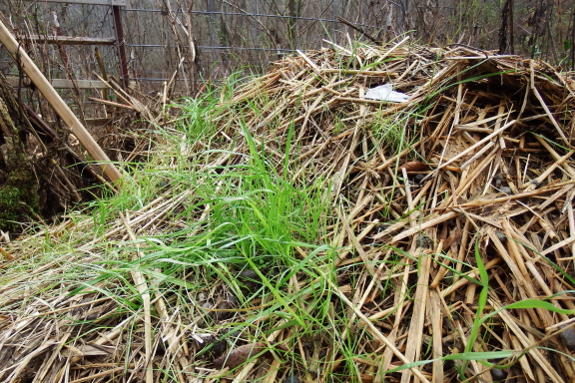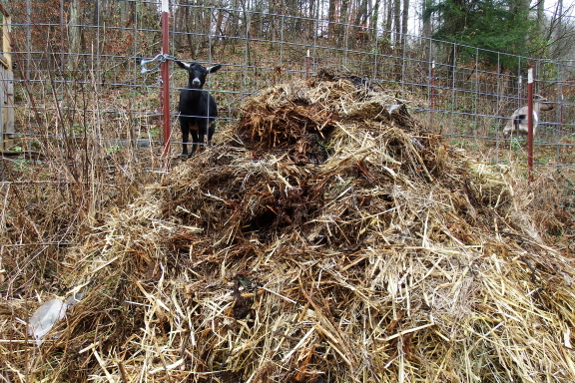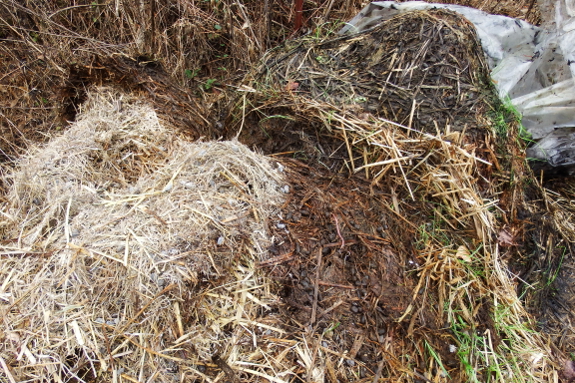
Piling up the goat manure

Phase one of our homegrown fertility campaign is the garden/kitchen/chicken compost pile. But that isn't nearly enough to make it through the year. Enter phase two: the goat compost pile.
The photo above shows the
problem with goat manure. Our dainty eaters drop nearly as much hay
onto the floor as they eat, and that spoiled hay is full of seeds. If
those seeds sprout on the compost pile, it's not a bit deal. But nobody
wants a lawn in their garden.

Now, this isn't really as
big a deal as I assumed it was at this time last year. After putting
uncomposted goat manure on the garden all summer, I realized that it
really wasn't any weedier than the composted horse manure we'd been
using to date. But I've still decided to earmark the goat manure for
large-seeded crops like squash and corn that can easily be protected
from weeds using newspaper and straw kill mulches between plants.
And, in the meantime, I'm
building my goat compost mountain to see how many of those weed seeds I
can bake into submission before they ever reach the garden. To that
end, I cleaned out the goat barn and also used two older piles to
make the pile shown above. (It looks bigger than it is since the land
slopes toward the camera and the pile is supported on the back by a
fence.) In case you're curious, that's about three months' worth of
manure from two goats.

While turning the older
compost to incorporate it with the new, I discovered quite a few dry
patches like the one shown to the left in the photo above. I'd assumed I
needed to cover up the piles after about an inch of rain fell on them
to prevent leaching of nutrients, but it seems like I should have
allowed for at least twice that much rainfall pre-covering. Now that the
manure is in an even bigger pile, I probably should leave it out for a
solid month then take a look inside and see how well it's hydrating
before pulling out the tarps.
In case anyone's curious, this pile, unlike the other, doesn't get human pee. I figure the C:N ratio
of urine-soaked bedding with lots of goat berries is close to perfect
for compost critters. If you want to read far more about various types
of manures and other compostables, I recommend my Ultimate Guide to Soil. Enjoy!
Want more in-depth information? Browse through our books.
Or explore more posts by date or by subject.
About us: Anna Hess and Mark Hamilton spent over a decade living self-sufficiently in the mountains of Virginia before moving north to start over from scratch in the foothills of Ohio. They've experimented with permaculture, no-till gardening, trailersteading, home-based microbusinesses and much more, writing about their adventures in both blogs and books.
Want to be notified when new comments are posted on this page? Click on the RSS button after you add a comment to subscribe to the comment feed, or simply check the box beside "email replies to me" while writing your comment.
